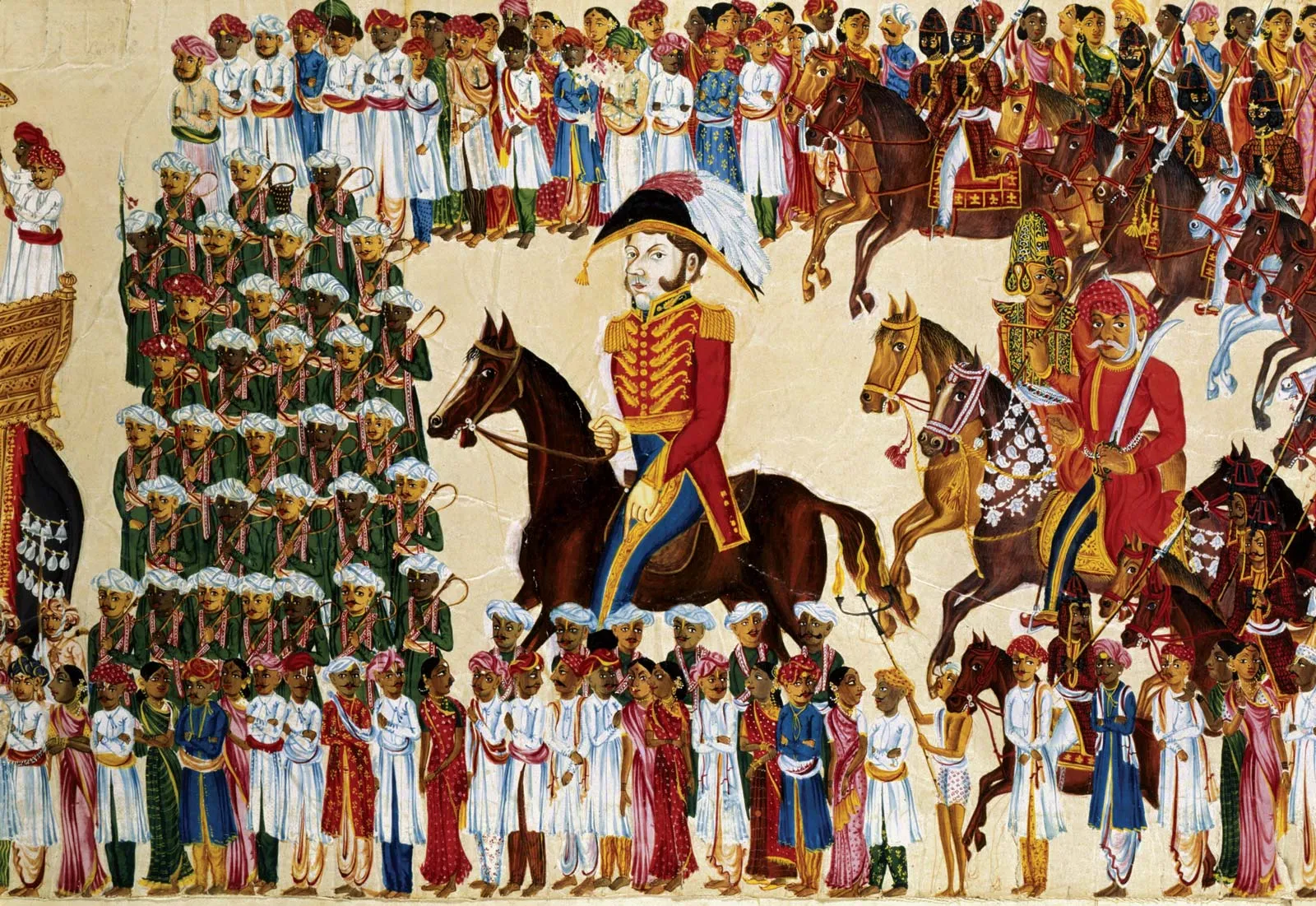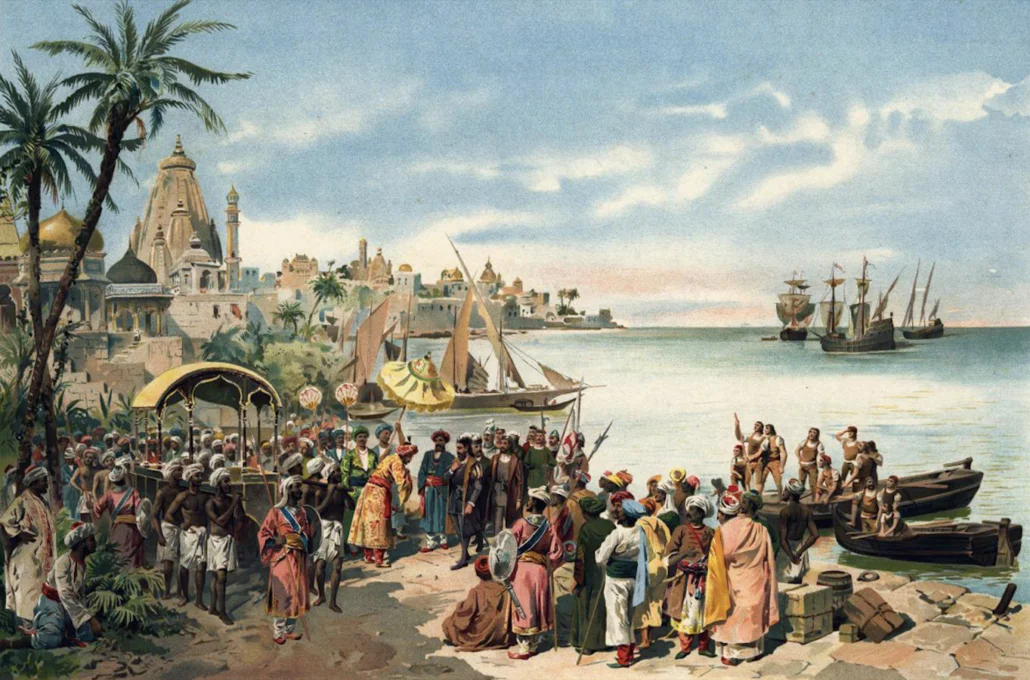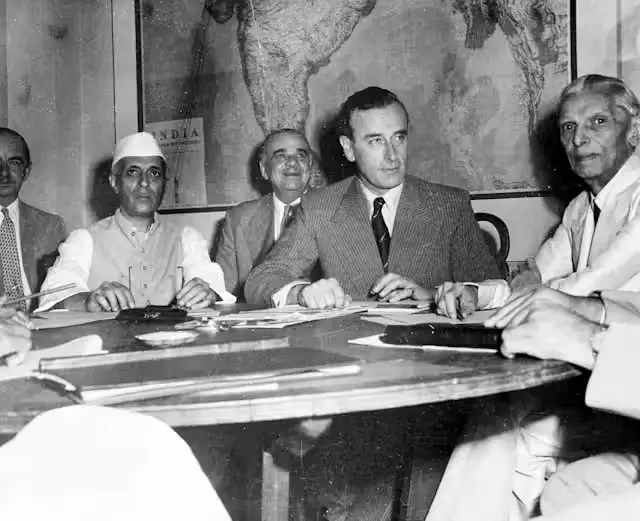Artificial Intelligence and related technologies will impact every major industry and institution during the present decade. This tectonic shift is creating a new multi-trillion-dollar economy worldwide, even as it decimates some facets of the current economy. It is nothing short of a new industrial revolution, creating a new world order with important shifts in the centers of power. New global superpowers will exert an imperialistic control over countries that lag. At the individual level as well, new haves and have-nots will emerge based on their proximity to this technology.
The impact of AI on society will not be the same for everyone. Nor will the available remedies be uniformly applicable. It will manifest differently from place to place, industry to industry, and even from one individual to another. For example, driverless cars will have more impact in the US than in low-wage countries where human drivers are inexpensive. The education system’s standards and capacity in one place will make it easier to re-train large numbers of workers for careers in the new tech economy, whereas re-education will not be as feasible in places where the existing education infrastructure is weak. Wealthy communities will be able to invest their capital and benefit from the opportunities of AI, while those without financial capital will be left stranded.
My research on the likely impact of AI on India has entailed numerous conversations with thought leaders and the study of the written materials available. NITI Aayog, India’s leading government policy think tank, has provided helpful reports on the subject. I also recently read Bridgital Nation: Solving Technology’s People Problem written by the Indian industrialist, Natarajan Chandrasekaran, chairman of Tata Sons. As the title implies, it specifically addresses AI’s impact on India’s people. Appendix C gives my critique of this book and explains why I consider its approach insufficient.
Most reports I have read on AI’s impact on India adopt the framework used by Western industry analysts as their starting point and fine tune the conclusions by plugging in Indian statistics. There is a lack of fresh studies that start from the ground up in India, beginning at the grassroots and working up, rather than going top-down from the West to Indian corporates and then further down.
Some of the glaring blind spots are as follows:
-
The focus of most reports is on the big corporates. The impact on the bottom 500 million Indians in economic status, if considered at all, is addressed as an afterthought.
-
Most reports do not build financial models to accurately estimate the capital and operating expenses involved in implementing AI. Their forecasts are largely based on surveying industry executives and employees with leading questions of a positive kind, while avoiding the troubling issues except in passing. Many respondents are not sufficiently informed about AI to give useful views of the future.
The problems of unemployment and inequalities are brushed aside as non-issues: The conclusions of some Western reports that new jobs will replace old ones is quickly assumed to be applicable to India without due diligence on the details.
What is not considered are the following:
a. The new jobs created by AI will help a different social-economic demographic group, i.e. those with high standards of education that very few Indian youths get. These few privileged youths with good education are quickly bought off and plucked away to build intellectual property for Western multinationals. But the jobs lost will be from the lower- and middle-class workers that are poorly educated and insufficiently skilled.
b. Many of the new jobs in AI will be geographically concentrated in places like Silicon Valley and Bengaluru. This will exacerbate the rich versus poor geographical divides within India as well as between developed and developing countries.
c. The new AI related jobs will go to the youth and not the middle-aged workers displaced at the peak of their careers. The speed of disruption is too fast to allow the present generation of workers to continue employment for their remaining careers. They will become obsolete in their vulnerable middle-age. This is a serious inter-generational disruption.
d. The financial burden of the massive re-education of millions of workers is not something we can assume the corporates will automatically do. The rosy promises of re-training workers are simply not backed by credible commitments. In fact, some reports suggest that such talk by industry leaders serves as good public relations to mask the calamity of unemployment, by kicking the can down the road rather than dealing with it.
e. The fallback position of universal income for everyone is touted as a magic wand, but this is the same old idea of taxing the rich to fund the poor that has never worked on a sustained basis.
-
India’s newly minted billionaires, the new zamindars and robber-barons of India, are simply in denial of the problems.
-
India’s big data assets are being siphoned off by foreign social media giants right under the eyes of ignorant politicians, bureaucrats, and industrialists.
-
The reports are silent on the major issue raised in Chapter 3 concerning psychological and emotional control of users by the digital platforms, and the resulting mental colonization by foreign ideologies.
-
The reports do not consider the national security threat of breaking India forces becoming AI-enabled and managed from their foreign nexuses.
As mentioned earlier, reports on AI in India are targeted at business leaders and cater to those vested interests. Even reports written by government entities do not adequately address the broader social impact that I have raised.
The silence on AI’s social impact is especially troubling. Other social issues like genetically modified foods, public health, water shortages, social injustices, and many others rightfully get the space deserved in public forums. Why not AI? One reason might be that policymakers and public intellectuals who ought to be concerned are invested in the foreign platforms for their personal reputation and therefore do not wish to rock the boat.
India has recently started taking AI seriously, but the response is weak and has come rather late. China and the US have a head start of more than a decade, and it will be difficult for India to catch up. The ramifications of being left behind will be serious. Further, India’s path forward is crippled by several factors. India’s budget for AI development is tiny compared to levels in the US and China.
The main opportunity in AI that has been identified is for Indians to supply labor for foreign clients. Subordination to other countries will perpetuate the problem of Indians serving as the labor class that builds intellectual property assets for others. Many AI start-ups in India are funded by foreign companies with deep pockets and a tentacled hold, so that the occasional Indian success story is quickly acquired and digested into the global brand. Those that are funded domestically often look to sell out to foreign tech giants as their exit strategy. Examples include Halli Labs and Sigmoid Labs, both AI start-ups in India that got acquired by Google. Many Indian start-ups are “me-too” copycats offering little original intellectual property leadership—mimicking a foreign platform, Uber, Amazon, or Airbnb, etc.
Even the government’s NITI Aayog, which reports directly to the prime minister, is taking the easy path of joining hands with foreign giants like Google to develop India’s ecosystem for AI rather than developing its own strategy. If these trends persist, India will continue to export raw labor, and import the finished technology, rather than actively participating in the creation of new technology that is owned by India.
China developed a comprehensive and focused national high-tech strategy about twenty-five years ago and has implemented it brilliantly. In the US, the AI strategy is not dependent on the government; instead, large companies like Google, Facebook, Amazon, Apple and Microsoft each has a robust strategy driving its special place in the AI revolution.
In India, most commentators on economic, social, or political matters do not appear to have even a fundamental knowledge of certain strategic issues discussed in this book, much less to have an adequate response. NITI Aayog’s AI strategies are rudimentary, marginal, and too weak to make India a leader. Responding to China’s lead, in 2017 the Indian government did create an AI task force for economic transformation. In June 2018, NITI Aayog put out a 115-page report, National Strategy for Artificial Intelligence. Unfortunately, the report is disappointing, being little more than an introductory-level survey of the AI field, along with a laundry list of wishes and dreams. It neither delves into the deep structures of the industry’s global ecosystem nor addresses the range of issues raised in this book. In particular, the report ignores the psychological invasion of the masses by foreign digital media, an issue discussed at length in Chapter 3. However, what the report does acknowledge is that India is late in the game. To their credit, India’s planners have created and funded some concrete programs that use AI in healthcare, agriculture, and defense.
Laying bare these hard truths is unpleasant for me. However, because I care deeply for India and Indians and share concern about the future, I offer an analytical and unemotional review of the issues. India is my home and understanding its complexity has been a lifelong passion and pursuit. I am convinced that the AI revolution will affect India more than other countries. My views are likely to upset some people, but my intent is to wake up Indians and encourage them to make dramatic changes in their thoughts and actions.
I hope my views serve as a counterpoint to the accepted posture. Medical scenarios, engineering designs, and corporate business plans are routinely subject to stress tests to reveal insights about potential vulnerabilities that might not be obvious. In that sense, stress testing is inherently a negative exercise. Its success is not determined by highlighting what is already known to be strong about the system being examined; rather, its purpose is to put the spotlight on the problems that need more special attention. Similarly, my posture for stress testing India is to offer clarity on the disruptions India is likely to face.
The arrival of AI as a cause for worldwide societal disruption calls for an evaluation of India’s ambition of becoming a global superpower. The evaluation should be free from politics, judging, moralizing, and blaming; to be effective it must present objective facts and likely outcomes. The goal of the exercise is to evaluate India’s robustness in the emerging world order.
The question whether AI is an existential threat to India is an important exercise at this point because of the country’s vulnerabilities: overpopulation, low education levels, Byzantine-like fragmentation, industrial and technological obsolescence, political disruptions, and security threats from formidable neighbors. India’s existing equilibrium is precarious due to risks from what I have termed the breaking India forces. All these factors make it urgent to engage in an unemotional stress test of India’s sovereignty as it relates to the latest technological disruptions.
On a positive note, it must be said that India serves as a unique role model for many developing countries because of its impressive recent economic performance despite the burdens of its colonial history. Beating all negative predictions, it has maintained a stable democracy for over seventy years and given voice to the largest number of voters in the world. India has an amazing track record of scientific study that includes sophisticated fields like space exploration and indigenous research on nuclear energy.
The past few governments have successfully sold the idea of India as a superpower and the vision that the twenty-first century will be the Indian century. Many legitimate points support this claim. India has had several years of solid GDP growth even though it is inconsistent and uneven across different regions and segments of the population. Its economic activity is in the top two or three positions in the world in several key areas. There has been a remarkable digitalization across all segments of industry and civic society, as well as development of national backbones on an unprecedented scale. Private companies like Bajaj Auto are role models for beating the Chinese in manufacturing and creating a global footprint.
The productivity of Indian workers has increased significantly in recent years. India has a huge entrepreneurial, innovative, and well-educated class of movers and shakers. A small, albeit significant percentage of its youth is functioning at the highest levels of innovation around the world and making noteworthy contributions at the cutting edge of technology. India has the world’s largest human resource of software engineers and until recently it was the leading software house serving the world. The country is also home to the world’s largest youth population, which could mature into a powerful workforce with proper education and investments. Large populations lead to high levels of consumption, which translates into strong demand for goods, which in turn can ignite a manufacturing economy. In addition to economic development, India has also made structural reforms to strengthen its foundations, ranging from integrating its states to removing some sources of social fragmentation. But many of these reforms are merely repairing the defects built into the national structure at the time of independence.
India accomplished these feats and more without once in its history seeking to invade, colonize, or oppress other countries, engage in theft of intellectual property or industrial espionage that characterizes modern China. In prior centuries, India exported its civilization’s assets to China without demanding anything in return and without attempting to assert hegemony. Even though India has suffered at the hands of numerous foreign invaders, it never attempted to expand its territory.
However, good intentions, especially in the present circumstances, are not enough to offset India’s daunting challenges. The question to be addressed is: Will these accomplishments be enough to offset the challenging trends discussed in this book, or are they too little and too late? This is no time to hide behind a false sense of security and complacency.
India’s pride often includes the feeling that it is the vishvaguru, or the guru of the world, at least in a spiritual sense. But what is seldom discussed in these proclamations is that such a lofty status also brings corresponding karmic responsibilities. In claiming such a status, has India succeeded or failed in its responsibilities?
Indeed, there is great enthusiasm in India about becoming a global soft power. For instance, India has adopted the posture of leading the world’s yoga movement and is starting to do the same in Ayurveda. The film industry and other popular cultural movements have already become established in the global discourse as Indian exports.
However, the following reality check needs to be considered.
Culture ≠ soft power: Just because a country has a wonderful and robust popular culture does not necessarily mean that it has turned this into any power per se. Soft power is the ability to influence others’ policies according to one’s own interests. Culture, exotica, and tourism are separate entities from soft power. It is a persuasive power over others in a pragmatic sense. Only when culture is transformed into concrete influence over others does it become soft power. Despite their growing popularity, yoga and Ayurveda do not constitute soft power for India. In fact, the Ayurveda certification in Western countries is not controlled from India. The New York-based Yoga Alliance is advancing its goal of standardizing yoga practices decoupled from Indian traditions. The Indian government’s efforts to spread awareness of yoga are commendable, but they have not produced any power per se.
Hard power as a foundation for soft power: The real question to ask is whether soft power is sustainable without hard power. Is soft power by itself viable? Or is that merely the fallback position of those that fail to compete in the hard power kurukshetra (battleground), a cover for their weakness by claiming soft power as a consolation prize?
Individual success ≠ collective soft power: India is also justifiably proud that its diaspora is asserting its Indian identity and has excelled as doctors, technology entrepreneurs, financial industry experts, pharma industry leaders, chefs, filmmakers, and other professionals. Indians head some of the world’s largest multinational companies. There is, however, a big difference between the power of individuals for their own personal success and the power of India’s institutions for global impact. There is a difference between Indians using their heritage for personal gain and those sacrificing their personal success for a greater national interest.
A recent example of a country’s use of soft power is how China has taken over indirect control of the WHO and made it support the country in the Covid-19 controversy. In contrast, consider the triumph with which India sent US president, Donald Trump, his favorite medicine, hydroxychloroquine, and received hugs and a pat on the back through his tweets. Yet within a few weeks, the US Commission on International Religious Freedom listed India among the countries violating religious freedom. Despite the widespread practice of yoga in the US, India has failed to use yoga successfully for impacting US foreign policies. In other words, soft power must be a pragmatic tool, and not about emotions, symbolism, and empty gestures.
It might come as a surprise to some that India had considerable soft power on the world stage some decades back when it was the head of the Non-Aligned Movement (NAM). It demonstrated the ability to easily secure large numbers of votes in the UN and other forums and override the Western powers on many issues. At that time China had no clout globally; but in the past two decades its influence has grown tremendously across Europe, Africa, and South America. Today, China has a large vote bank in the UN among the developing countries and India does not enjoy the same position relative to China it once did. The soft power leadership among developing countries shifted in China’s favor after NAM folded. Post the outbreak of Covid-19 there is a fresh anti-China wave that India is leveraging, and the long-term implications could be important.
The scope of my stress test is broad, qualitative and informal. The questions and challenges listed below are examined in the chapters that follow. Each of them is serious enough to deserve further examination.
-
India’s overpopulated, but undereducated, public might face levels of unemployment that could precipitate social breakdown in certain communities. Some of the jobs are artificially created by the government, and such employees are only marginally productive. Is the presumptive youth dividend truly a dividend, or is it more of a liability? Clearly, overpopulation has set the country up for unsustainability; so what is being done about this?
-
While aspiring to become a world-class manufacturing base,most of India’s workforce is likely to remain immured in low-wage and low-skill tasks relative to better educated countries. India’s education system is uncompetitive to produce workers for the industries of the future.
-
Given its lack of effective strategic planning on AI and big data, plus its dependence on American digital platforms and Chinese hardware, India might slip further toward digital colonization. Why does India lag at least a decade behind China in AI and related technologies, despite India having been recently proclaimed as the world leader in software? How vulnerable is India to becoming a digital colony of the West and China? How do Indian industries, military, and other sectors stack up in addressing the AI-based technological revolution?
-
Traditionally, India’s ability to adapt has held its diverse internal forces in equilibrium. But today, Indians are chasing American aspirations, emotional support, validation, and technological platforms. The traditional shock absorbers and self-correcting mechanisms are no longer operative. Is the public psychologically fragile?
-
The moronization of the masses is making people mesmerized by theatrics, pageantry, grandstanding, and personality cults for movie stars, cricketers, politicians, and billionaires alike. Public forums are highly polarized and prone to sensationalism, dirty politics, and petty rivalries. A scan of daily headlines and social media shows insufficient interest in the serious issues discussed in this book. How psychologically vulnerable are the Indian masses because of the shift of their agency to the digital platforms?
-
Artificial Intelligence could disrupt the delicate social equilibrium far worse than any prior upheaval since India’s independence. Is the parliamentary democratic system and other core tenets of the Indian Constitution proving successful?
-
India’s security involves combating internal insurgencies as well as protecting long borders with hostile neighbors; this requires considerable manpower that consumes the bulk of the military budget. Insufficient funds remain for indigenous R&D and technology related modernization. India is dependent on imported weapons to defend itself. India might find itself facing Pakistani boots on the ground, weaponized by China’s AI-based technology. How seriously vulnerable is India’s national security considering it is lagging in AI?
The goal here is to tease out risk factors that are not adequately being appreciated by the leaders and public intellectuals. Extensive public discussions are the need of the day in which various stakeholders ought to be included. Such explorations will lead to a more formal modeling of India in which all the facts and the policies and responses could be used as big data for training Indian policymakers and monitoring India’s stability.
Excerpt from the book Artificial Intelligence and the Future of Power: 5 Battlegrounds by Rajiv Malhotra, a best-selling author and pioneer in the research on civilizations and their engagement with technology and media from a historical, social sciences and mind sciences perspective. To learn more about the author, please see here: https://infinityfoundation.com/




